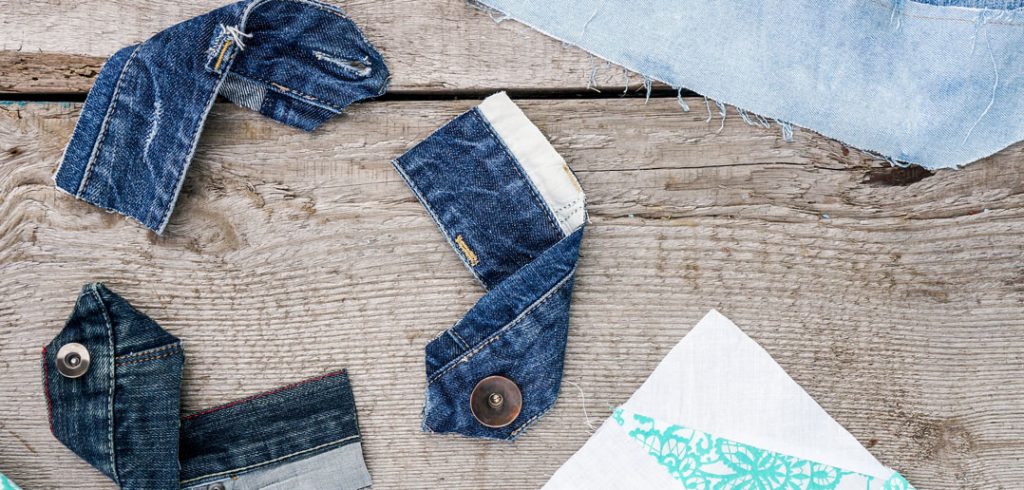When it was time to clean out her closet, Yekaterina Goncharova would drive around her neighborhood in Sheepshead Bay, Brooklyn, searching for a charity clothing bin where she could donate her old clothes.
“I’d go the place that I last remembered it was, but sometimes the bin was there, and other times it was moved,” said Goncharova, a recent graduate of Fordham College at Rose Hill.
That experience is one of the things that inspired Goncharova, who studied economics and environmental studies, to research consumer incentives for recycling unwanted clothing. Donating and repurposing textiles is a critical way that consumers can reduce landfill waste, she said. However, the process must be efficient to create impact.

“The final step of the supply chain is the disposal aspect, and that’s the thing that companies don’t usually think about,” she said. “Recycling bottles and paper comes easy. Everyone knows where to put them. But when it comes to clothes, particularly those from fast fashion brands, it becomes difficult to know what to do with them when you don’t want them anymore.”
According to Hitwise, a consumer insights firm, the fast fashion industry—which includes brands like H&M, Forever 21, and the web-based Boohoo.com—has grown 21 percent over the past three years. But this growth has presented a lot of challenges, particularly for the environment, Goncharova said. According to the U.S. Environmental Protection Agency, Americans discard about 13 million tons of textiles annually, and only two million tons of those clothes were recycled.
Goncharova believes this can change if consumers and businesses work together to recycle textile materials instead of throwing them out.
“I love sustainability because it allows us to create a self-sustaining supply chain,” she said.
Identifying Motivations for Sustainable Fashion
Through a Fordham-funded research study, Goncharova hoped to identify ways to motivate consumers to recycle their unwanted clothing. She recruited a randomized group of 100 students from the University and conducted a preliminary questionnaire via email that was focused on demographic information, the participants’ shopping habits, and their knowledge of sustainability.
Next, the participants were given eco-friendly plastic bags that were manufactured from 25 percent recycled HD plastic, with three types of options for shipping. They could use shipping labels that were prepaid, and send them to the recycling companies Give Back Box and Schoola; schedule a donation pick-up with the Salvation Army for free; or pay their own shipping to send their clothes to denim recycling companies like Blue Jeans Go Green and Patagonia.
“One of the goals was to see if people would be more inclined to donate clothes if shipping was free or if they received a shipping label for donations in-store at the time of their purchase,” she said.
Along with the donation bags, participants of the study were given a follow-up questionnaire about their reactions to the mailable donation bags and the likelihood that they would use the bags again.
Through the study, Goncharova found that participants given the prepaid labels were most likely to recycle. Results from the questionnaire showed a significant correlation between a participant saying they would recycle clothes if it was as easy as online returns, and if brands themselves offered rewards for recycling. They also showed that prior knowledge of sustainability was not related to the participants’ desire to recycle once they were offered this option.
“A lot of people want to donate their clothes, they just don’t know what to do with them,” she said.
Goncharova stressed that creating opportunities for sustainable fashion should be just as important to companies as it is to consumers.
Some companies are already working to reduce landfill waste. In 2013, H&M launched an in-store recycling initiative, which allows customers to drop off unwanted clothing from any brand. And Madewell, a brand that generates most of its sales from denim, partnered with Blue Jeans Go Green, a denim recycling company. Other companies, like Patagonia, allow customers to trade and repair their brand’s used clothing.
“Businesses have a role in this,” she said. “They can’t just throw their hands up, and say, ‘I’m not a part of that.’ These materials are part of the supply chain and they can still add value to it by putting materials back in.”


